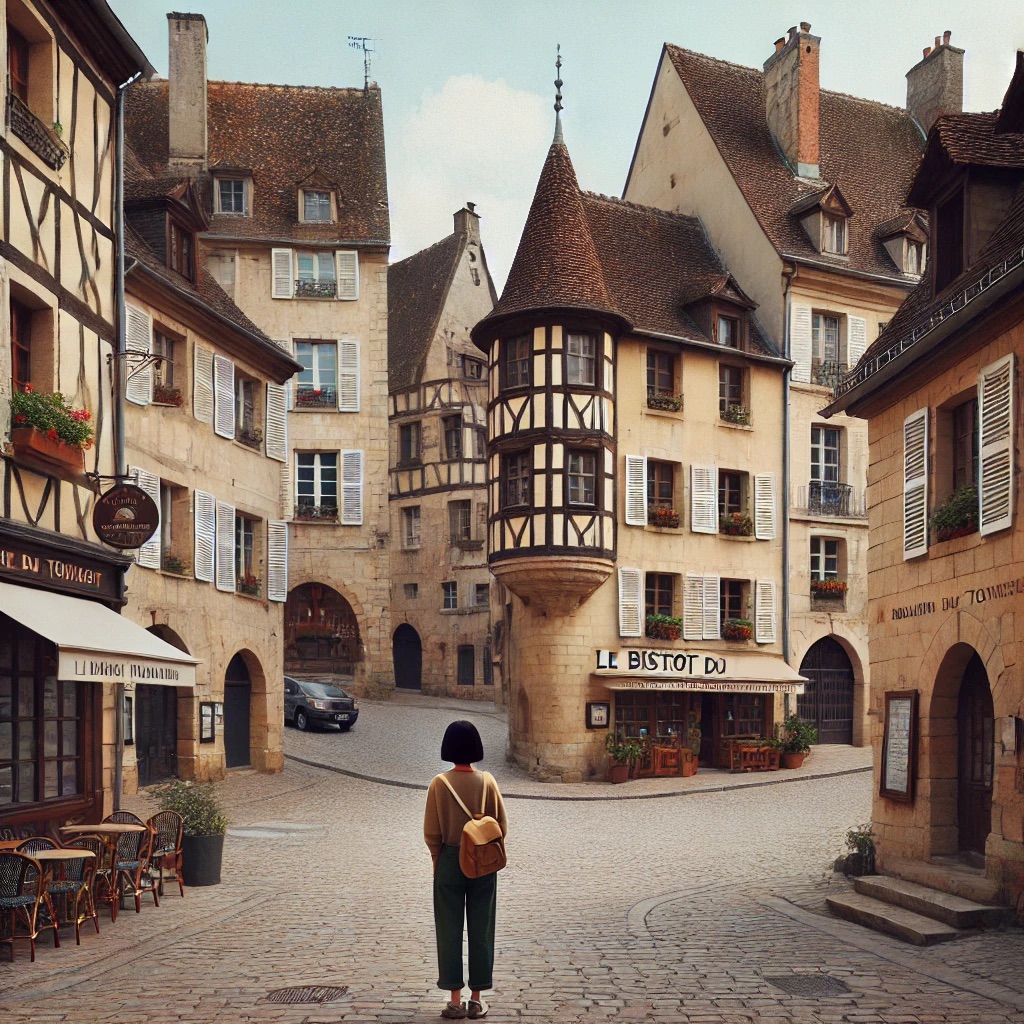ChatGPT:Poitiers, located in the Nouvelle-Aquitaine region of western France, is a city steeped in history and culture. Known for its rich medieval heritage, Poitiers features an array of well-preserved Romanesque architecture, most notably the Church of Notre-Dame la Grande, famous for its intricate facade. The city played a significant role in French history, particularly during the Battle of Poitiers in 1356, one of the key conflicts in the Hundred Years’ War.
Poitiers is also home to the University of Poitiers, one of the oldest universities in France, founded in 1431, which contributes to the city’s lively student atmosphere. The city’s compact, pedestrian-friendly center is filled with narrow streets, charming squares, and historical landmarks, offering a pleasant environment for exploration.
Modern Poitiers is also known for Futuroscope, a popular theme park that offers a variety of futuristic rides and multimedia experiences. The city’s blend of old and new, along with its scenic location on the Clain River, makes Poitiers an intriguing destination for visitors interested in French history, architecture, and culture.
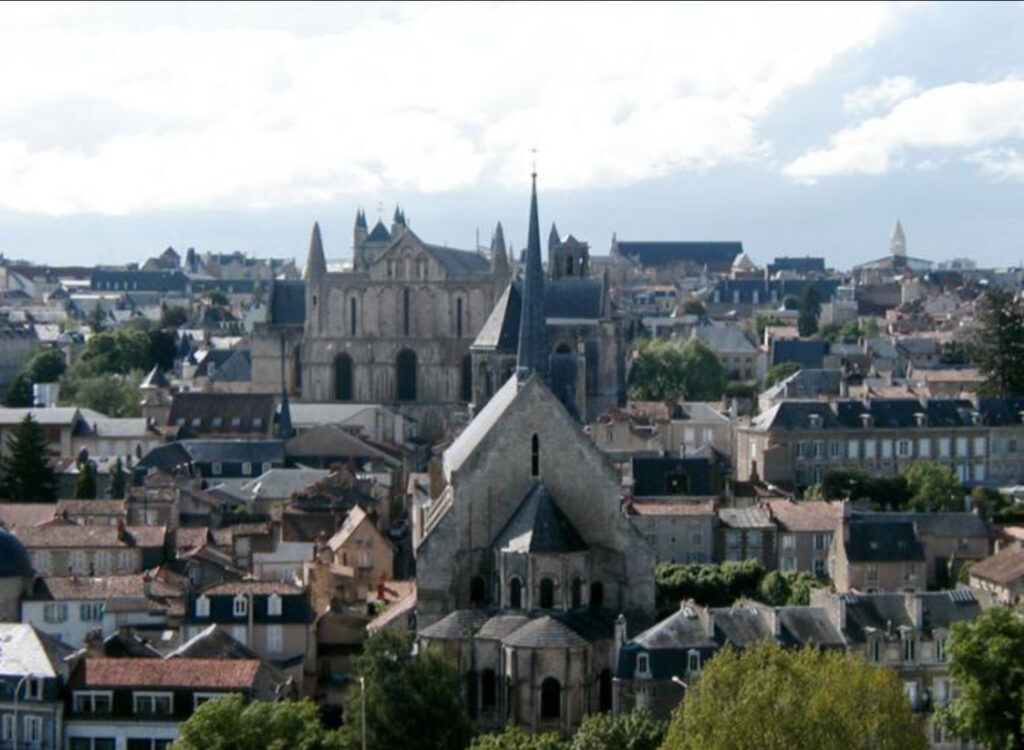
Poitiers, one of France’s oldest cities, has a rich history that dates back to antiquity. The origins of Poitiers trace back to a Gallic tribe known as the Pictones or Pictavi, who established a settlement called Lemonum (later Limonum) around 500 BC. The city’s location on a promontory between the Clain and Boivre rivers made it a strategic site for defense and trade.
Roman Era
Poitiers became part of the Roman Empire in the 1st century BC after Julius Caesar’s conquest of Gaul. Under Roman rule, Lemonum grew into an important provincial city. The Romans constructed several significant structures, including an amphitheater, temples, baths, and a vast aqueduct system. By the 3rd century AD, the city had become a center of Christianity, with one of the earliest Christian communities in Gaul.
Early Middle Ages
In the early Middle Ages, Poitiers became a significant center of religious and political power. It was the capital of the Kingdom of Aquitaine under the Merovingian kings. The city’s Christian influence grew with the establishment of the Diocese of Poitiers, one of the oldest in France. Saint Hilary of Poitiers, a key theological figure in early Christianity, served as its bishop in the 4th century.
The Battle of Tours (732)
Poitiers is most famous for the Battle of Tours (also known as the Battle of Poitiers) in 732 AD, where Charles Martel, the Frankish leader, halted the northward advance of Muslim forces from Spain. This battle is often cited as a crucial moment in European history, as it prevented the spread of Islam into Western Europe and solidified Christian control of the region.
Medieval Period
During the medieval period, Poitiers was a prominent political and cultural hub. The city was the capital of the Duchy of Aquitaine, and in the 12th century, it became the residence of Eleanor of Aquitaine, one of the most powerful women in European history. Eleanor’s marriage to Henry II of England made Poitiers a key city in the Angevin Empire, which stretched from Scotland to the Pyrenees. The city was a center of courtly culture and troubadour poetry during this time.
The University of Poitiers was founded in 1431, further enhancing the city’s reputation as a center of learning. The university attracted scholars from across Europe and played a significant role in the intellectual life of the region.
Hundred Years’ War and the Battle of Poitiers (1356)
Poitiers was also the site of another pivotal battle in European history during the Hundred Years’ War. In 1356, the English, led by Edward, the Black Prince, defeated a much larger French force near the city, capturing King John II of France. This battle had significant repercussions, weakening the French monarchy and leading to the Treaty of Brétigny in 1360.
Renaissance to Modern Era
In the Renaissance, Poitiers continued to thrive as an administrative and intellectual center. The Wars of Religion in the 16th century, however, brought conflict to the city, as it was a stronghold of Catholicism in a region with significant Protestant populations. Despite these tensions, the city remained an important political and cultural center.
In the 19th century, Poitiers saw industrial development, though it remained largely focused on administration and education. The construction of the railway connected the city to major French cities, further integrating it into the national economy.
20th Century and Beyond
During World War II, Poitiers was occupied by German forces, and the city suffered damage from bombings. After the war, Poitiers rebuilt and modernized, becoming an important regional center. The establishment of Futuroscope in 1987, a large theme park focused on futuristic multimedia experiences, marked a significant development in the city’s modern history, attracting visitors and boosting the local economy.
Today, Poitiers is a vibrant city that blends its rich historical heritage with modern cultural and economic activities. Its well-preserved medieval architecture, along with its status as a university city, continues to attract visitors and scholars alike.
Notre-Dame La Grande in Poitiers is one of the most remarkable examples of Romanesque architecture in France, renowned for its intricate facade and historical significance.
History
The origins of Notre-Dame La Grande date back to the 11th century, with construction likely beginning in the early 1000s and continuing into the 12th century. The church was built on the site of an earlier Christian place of worship, and its current structure was consecrated in 1086. The church was constructed during a period of religious and economic growth in Poitiers, which was an important center of pilgrimage and ecclesiastical authority at the time.
Notre-Dame La Grande has served as a parish church for the people of Poitiers throughout its history. During the medieval period, it was closely associated with the powerful clergy of the city, and its construction was likely funded by wealthy patrons and the Church. The church’s importance grew over the centuries, and it became a focal point for religious life in Poitiers.
Special Features
1. The Facade
The most striking feature of Notre-Dame La Grande is its facade, a masterpiece of Romanesque art that dates from the late 11th to early 12th century. The facade is richly decorated with a series of sculpted figures and biblical scenes, which were designed to convey religious teachings to the largely illiterate population of the time. Key elements of the facade include:
- Biblical Scenes: The facade is adorned with detailed reliefs depicting scenes from both the Old and New Testaments. These include the Annunciation, the Nativity, the Adoration of the Magi, and the Last Judgment. The figures are carved with a remarkable level of detail, typical of Romanesque sculpture.
- Saints and Apostles: Statues of saints and apostles are also prominently featured on the facade. These figures are placed in niches and stand as guardians of the church, reflecting the importance of saintly intercession in medieval Christianity.
- The Central Portal: The central portal is surrounded by intricately carved archivolts and a tympanum, which depict scenes of the Last Judgment. This was a common theme in Romanesque churches, intended to remind the faithful of the consequences of their earthly actions.
One of the unique aspects of Notre-Dame La Grande’s facade is that it was originally polychrome, meaning the sculptures were painted in vivid colors. Although the original colors have faded over time, the church occasionally restores the facade’s colors for special events, giving visitors a glimpse into how it might have appeared in the medieval period.
2. The Interior
The interior of Notre-Dame La Grande is relatively simple compared to its ornate facade but is still noteworthy for its Romanesque architectural features. The nave is covered with a barrel vault, and the walls are supported by robust piers and arches. The simplicity of the interior allows for a focus on the spiritual atmosphere and the church’s role as a place of worship.
The church also houses several notable artworks, including a 16th-century altar and a number of religious paintings and sculptures. The stained glass windows, though largely reconstructed after damage during the French Revolution, add to the interior’s ambiance.
3. The Crypt
Beneath the church lies a crypt, which is believed to date from an earlier structure that stood on the site. The crypt contains remnants of early Christian burials and has been an important site for archaeological research. It is also a place of pilgrimage, reflecting the church’s long history as a spiritual center.
Historical Significance
Notre-Dame La Grande has played a central role in the religious and cultural life of Poitiers for nearly a thousand years. It has witnessed significant historical events, including the battles and sieges that have affected the city over the centuries. The church has also been a place of refuge during times of conflict, and its walls have sheltered generations of Poitevins.
Today, Notre-Dame La Grande continues to be a functioning parish church and a symbol of Poitiers’ rich medieval heritage. It attracts visitors from around the world who come to admire its architectural beauty and to experience a connection with the city’s deep historical roots.
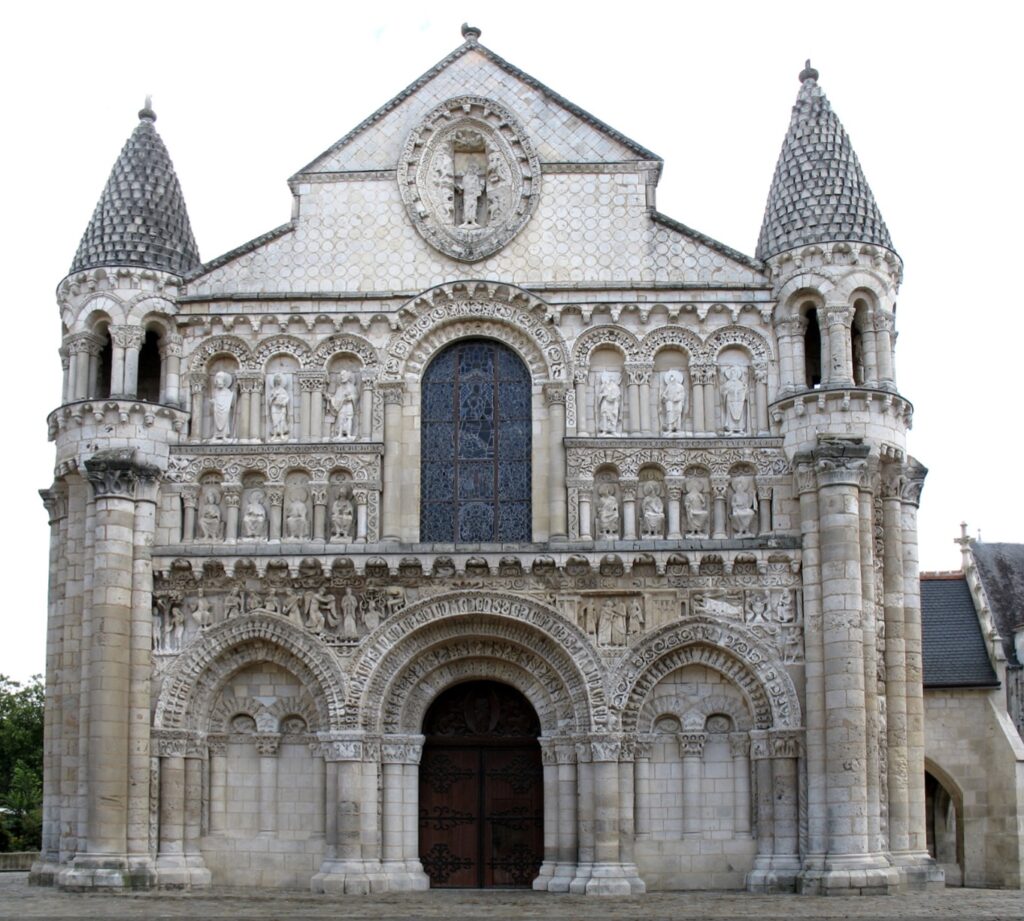
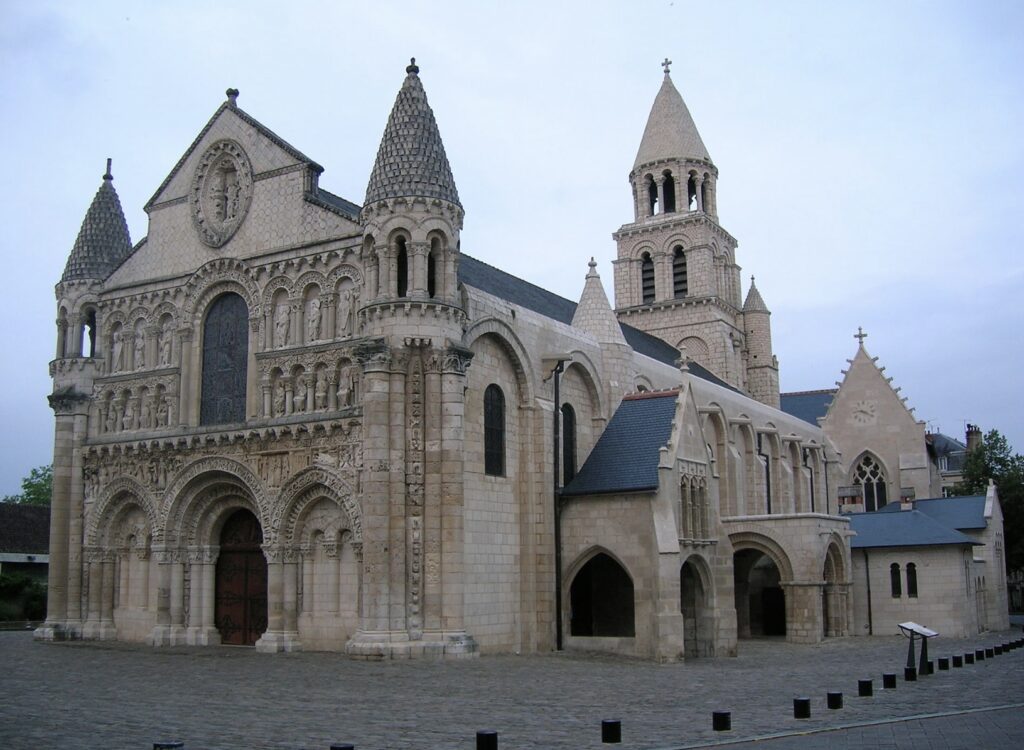
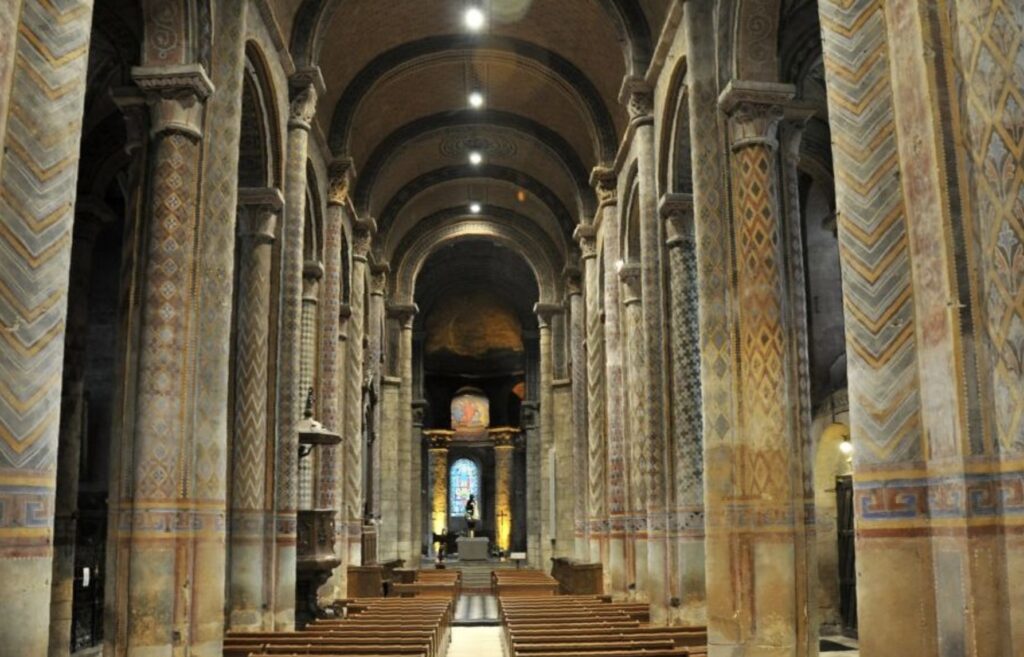
Poitiers, with its rich historical and cultural heritage, offers a wide array of monuments and tourist attractions. Here’s a list of some of the most notable ones:
Historical Monuments
- Notre-Dame La Grande
- A Romanesque church renowned for its intricate facade and historical significance.
- Palais des Comtes de Poitou (Palais de Justice)
- The former palace of the Dukes of Aquitaine, now serving as the courthouse. It features the impressive Salle des Pas Perdus, a large medieval hall.
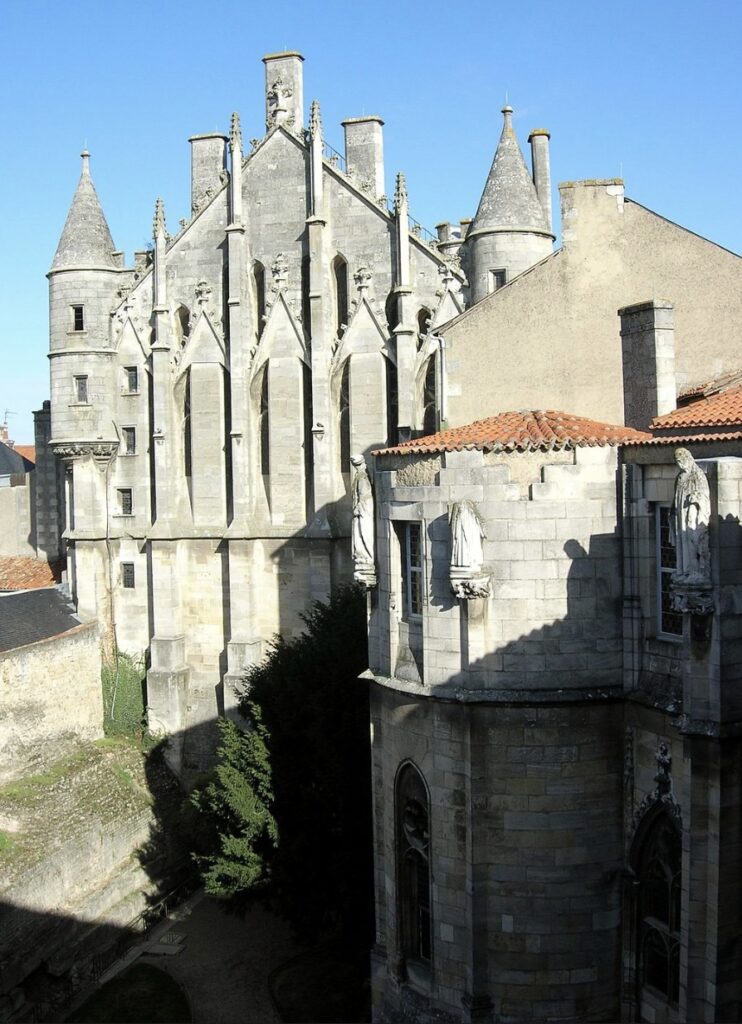
- Baptistère Saint-Jean
- One of the oldest Christian buildings in France, dating back to the 4th century. It features early medieval frescoes and a collection of ancient baptismal fonts.
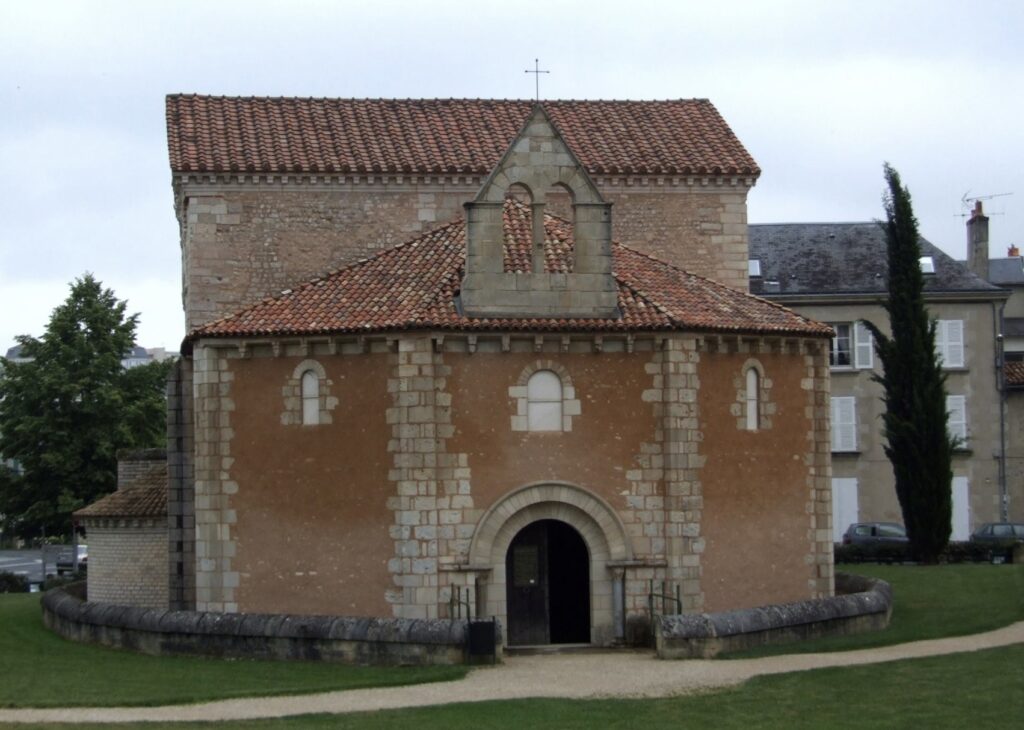
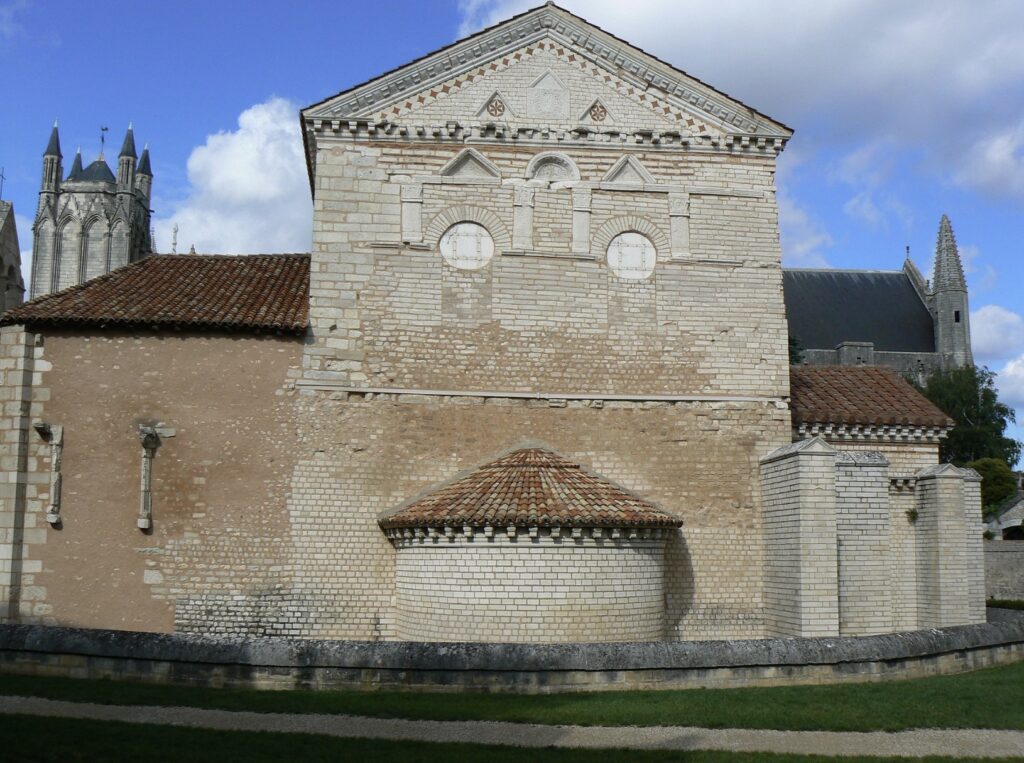
- Cathédrale Saint-Pierre
- A Gothic cathedral that was begun in the 12th century under the patronage of Eleanor of Aquitaine and Henry II of England. It is known for its beautiful stained glass windows.
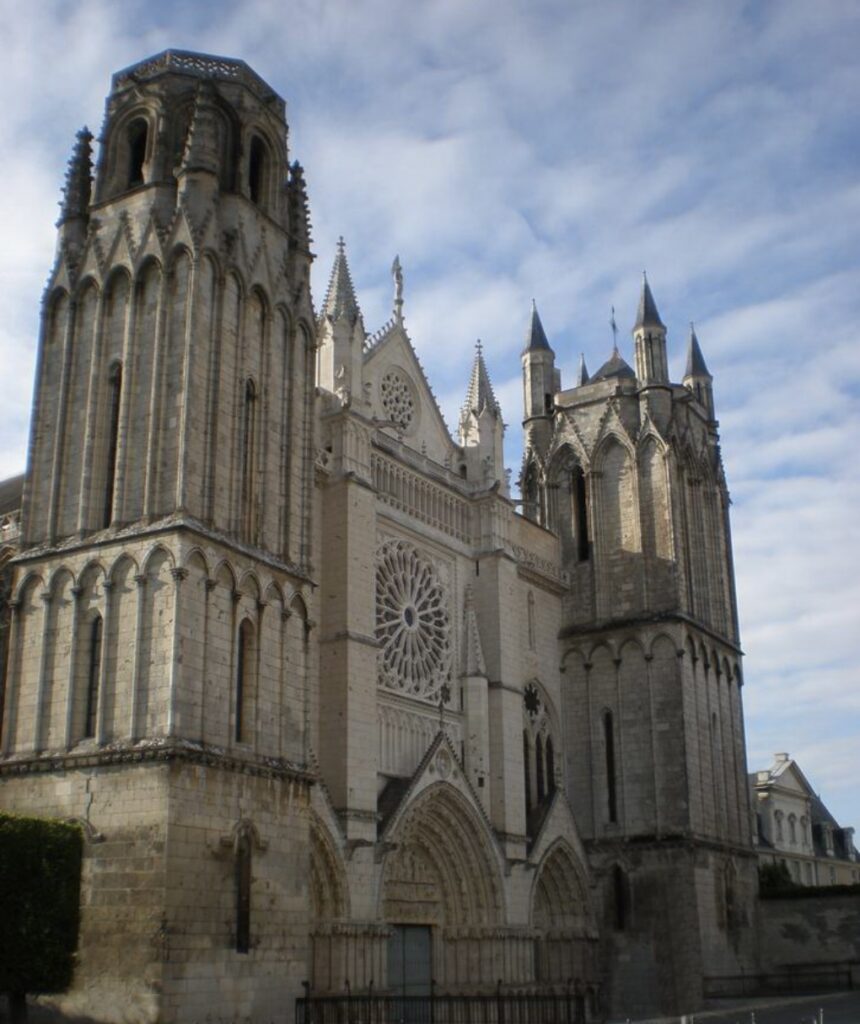
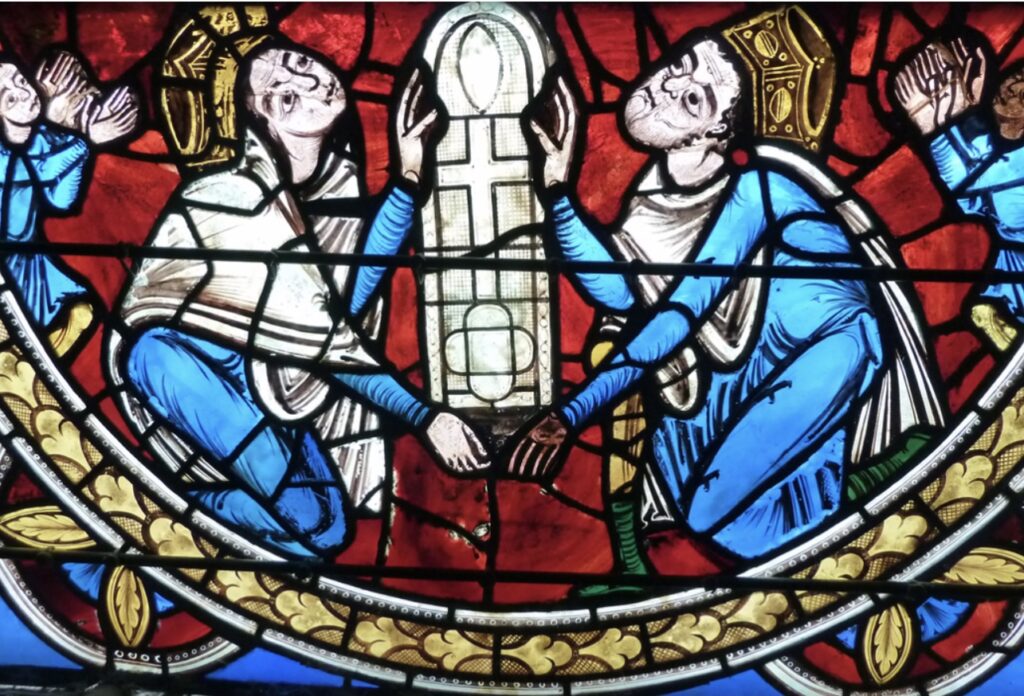

- Église Saint-Hilaire-le-Grand
- A Romanesque church dedicated to Saint Hilary, a former bishop of Poitiers. It is part of the pilgrimage route to Santiago de Compostela.
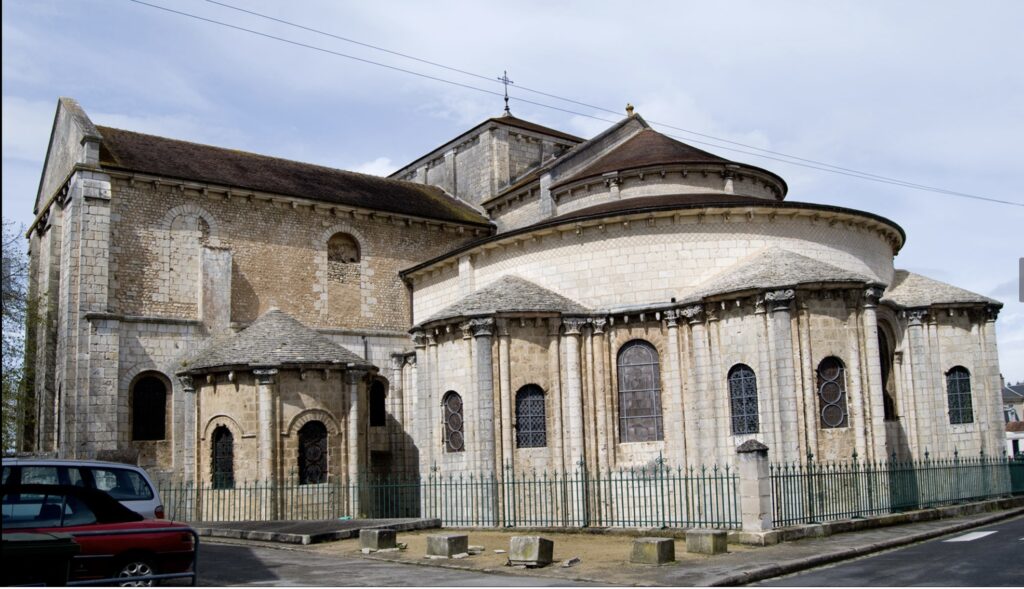
- Church of Saint-Radegonde
- A Romanesque-Gothic church dedicated to Saint Radegund, the founder of the nearby Abbey of Sainte-Croix. The church contains the saint’s tomb and is a pilgrimage site.
- Musée Sainte-Croix
- The largest museum in Poitiers, housing archaeological artifacts, fine arts, and historical exhibitions related to the city’s history.
- Tour des Cordeliers
- A 12th-century tower that is one of the few remaining parts of the city’s medieval fortifications.
- Montierneuf Abbey
- A former Benedictine abbey founded in the 11th century by William VIII of Aquitaine. The church is a fine example of Romanesque architecture.
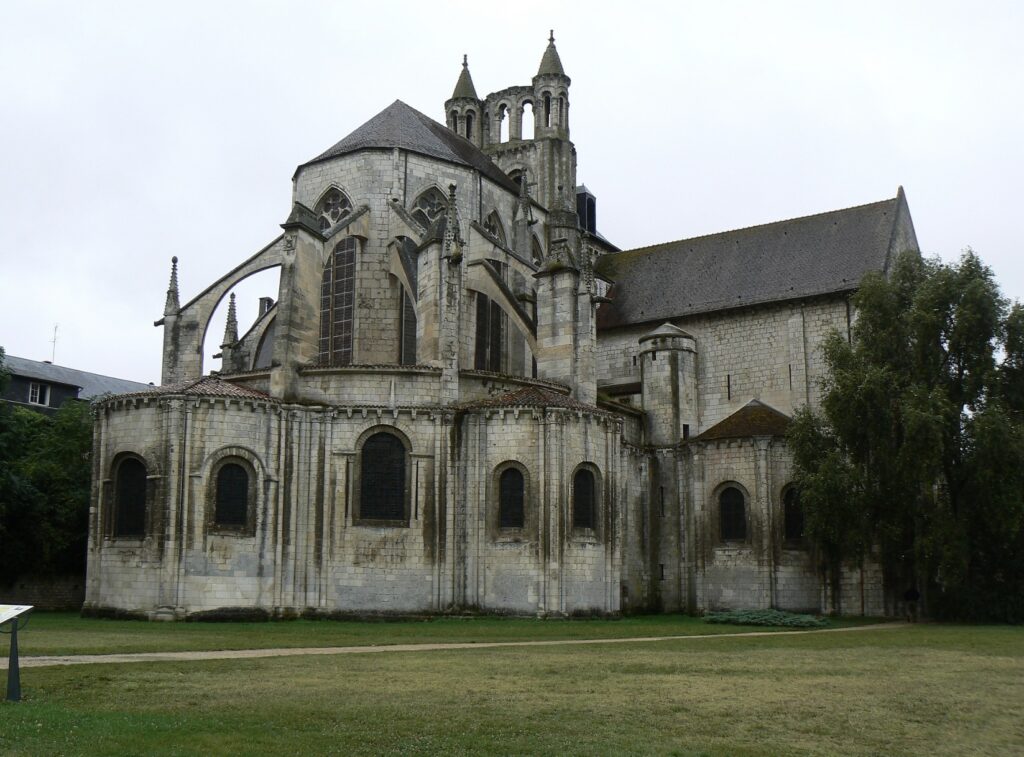
- Hôtel Fumé
- A 15th-century mansion that is now part of the University of Poitiers. It is known for its Gothic and Renaissance architectural elements.
- Porte de Paris
- A triumphal arch built in the 18th century to commemorate the victories of Louis XIV. It marks the entrance to the historical center of Poitiers.
Tourist Attractions
- Futuroscope
- A large theme park located just outside Poitiers, known for its futuristic rides, 3D cinemas, and multimedia attractions. It’s one of the most popular tourist destinations in the region.
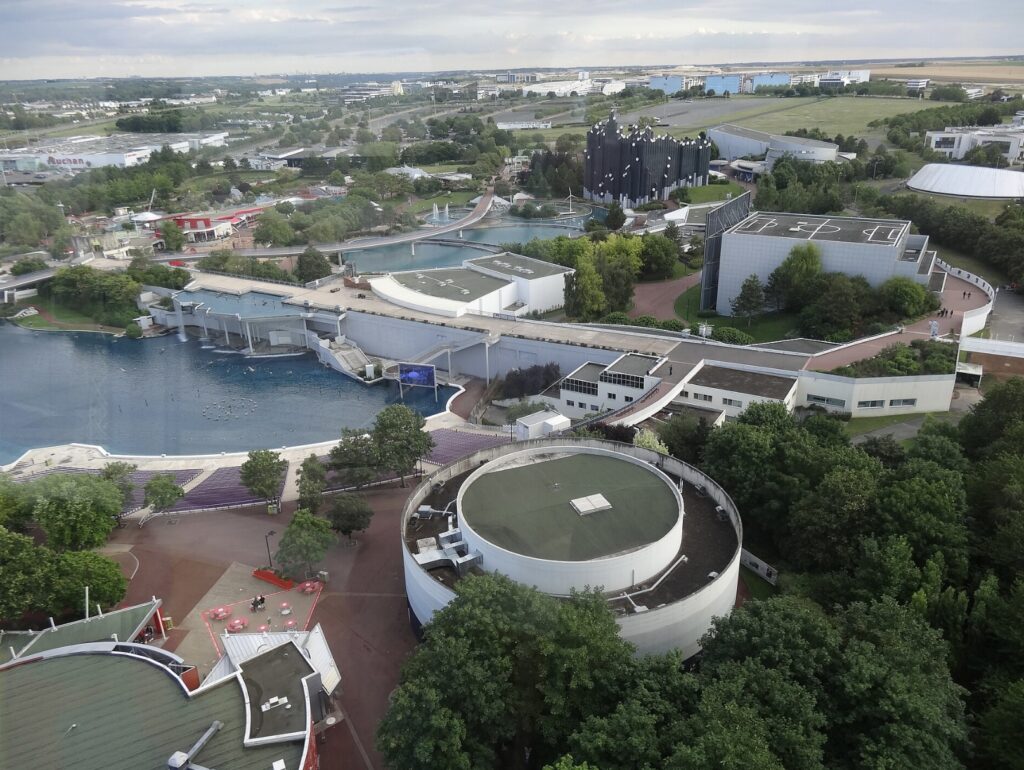
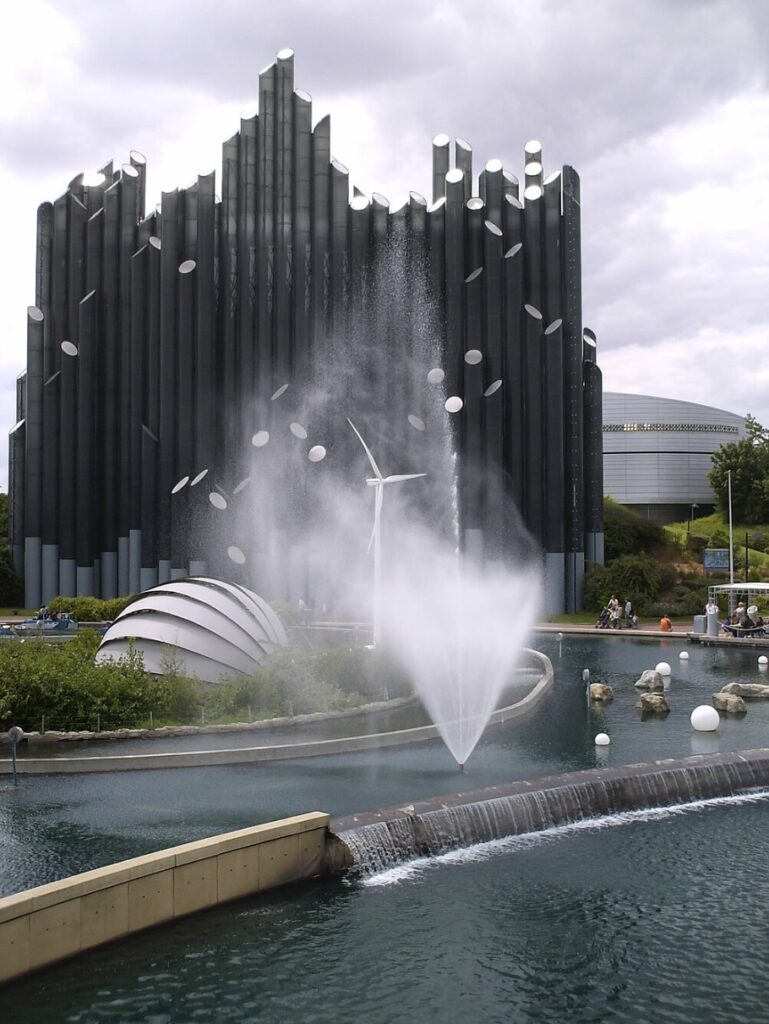
- Jardin des Plantes
- A botanical garden that offers a peaceful retreat in the heart of the city, featuring a variety of plants, trees, and themed gardens.
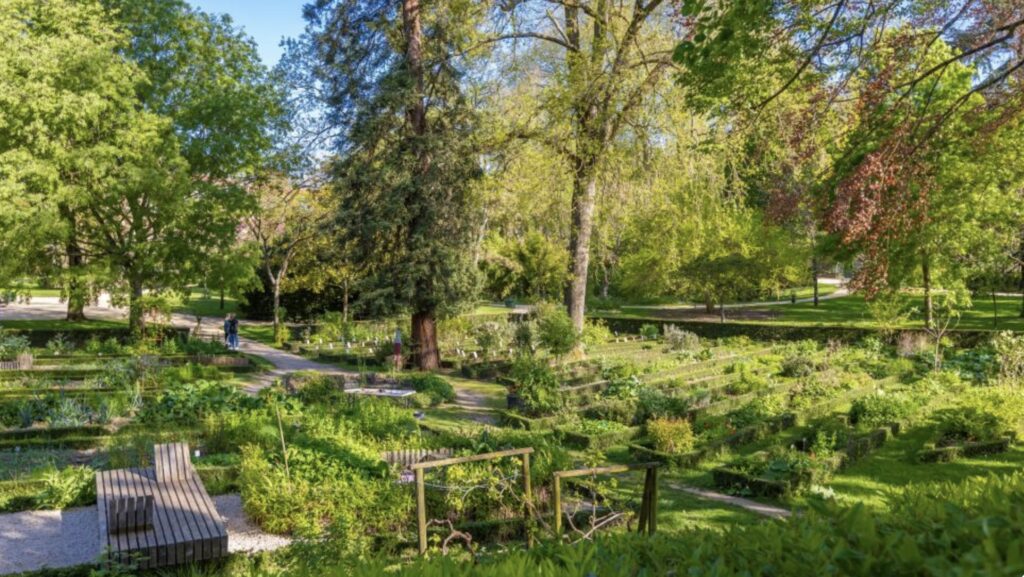
- Parc de Blossac
- A large public park in Poitiers with beautiful landscaped gardens, fountains, and walking paths. It’s a great spot for relaxation and leisure.
- Place Charles de Gaulle
- The main square in Poitiers, surrounded by historical buildings and lively cafes. The square hosts markets and events throughout the year.
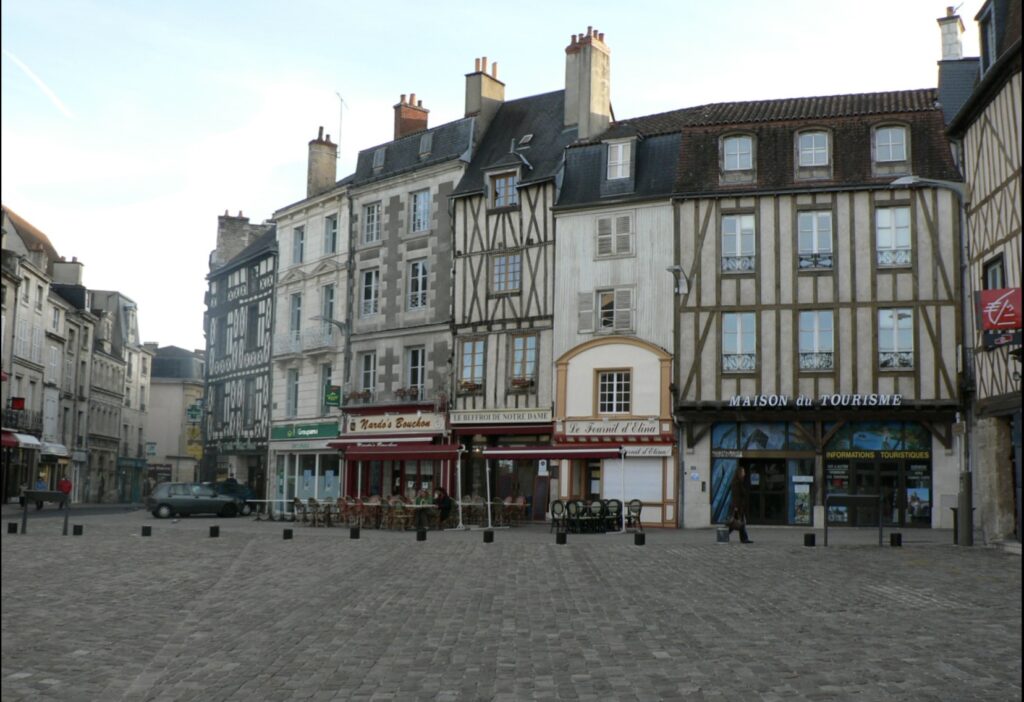
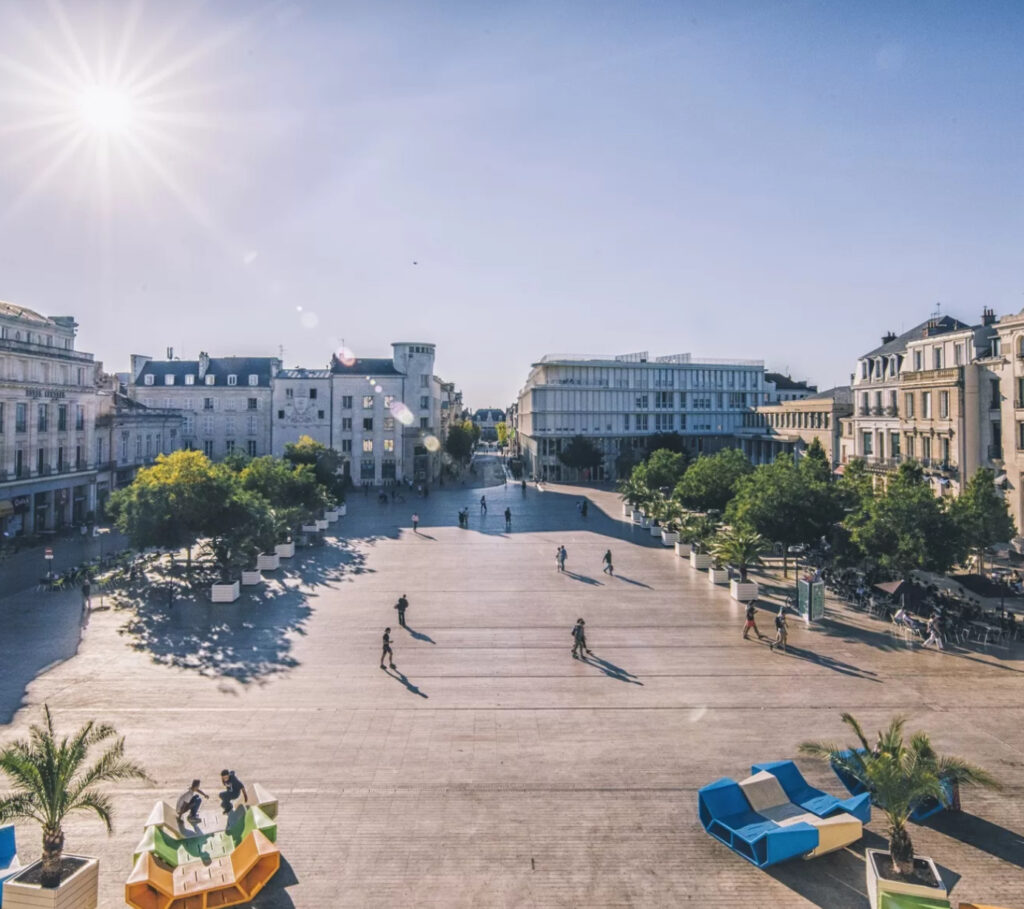
- Espace Mendès France
- A cultural and scientific center offering exhibitions, planetarium shows, and educational workshops on a wide range of topics.
- Maison de l’Architecture de Poitou-Charentes
- A center dedicated to the promotion of architecture and urban planning, hosting exhibitions and events related to the built environment.
- Church of Sainte-Radegonde
- A Gothic church that is a pilgrimage site due to its association with Saint Radegund, a Merovingian queen and the founder of the nearby Abbey of Sainte-Croix.
- Church of Saint-Jean de Montierneuf
- A Romanesque church known for its historical importance and architectural beauty, particularly its large nave and choir.
- Place du Maréchal-Leclerc
- A central square in Poitiers, known for its vibrant atmosphere and proximity to shops, cafes, and the town hall.
- Les Halles de Poitiers
- The city’s covered market, offering a wide variety of local produce, meats, cheeses, and other regional specialties. It’s a great place to experience the local food scene.
These monuments and attractions reflect the rich history, religious significance, and cultural vibrancy of Poitiers, making it a fascinating destination for visitors.
Here’s a suggested two-day itinerary for visiting Poitiers, blending its rich history, local culinary delights, and a visit to the futuristic Futuroscope, while ensuring a luxurious stay.
Day 1: Historical Exploration and Local Cuisine
Morning: Arrival and Check-in
- Accommodation: Check into the Hotel Mercure Poitiers Centre or Château du Clos de la Ribaudière for a luxurious stay. Both offer elegant rooms and excellent service, with Château du Clos de la Ribaudière providing a more countryside, château experience just outside the city.
Late Morning: Notre-Dame La Grande and City Center
- Start your day at Notre-Dame La Grande. Admire the intricate Romanesque facade and explore the interior.
- Stroll through the Place Charles de Gaulle and nearby streets to get a feel for the city. You’ll find charming boutiques and cafes to explore.
Lunch: Local Cuisine
- Head to Les Archives for lunch, located in a former church and offering a menu that blends traditional Poitevin cuisine with modern touches. Enjoy dishes like the famous farci poitevin (a local pâté made with herbs) and other regional specialties.
Afternoon: Exploring More Historical Monuments
- Visit the Baptistère Saint-Jean, one of the oldest Christian buildings in France, and then make your way to the Palais des Comtes de Poitou (Palais de Justice) to see the impressive medieval architecture.
- Explore the Musée Sainte-Croix to delve into the history and art of the region, from ancient artifacts to contemporary works.
Late Afternoon: Relaxation
- Spend some time relaxing at the Jardin des Plantes or Parc de Blossac. These green spaces offer a peaceful retreat where you can unwind before dinner.
Dinner: Gourmet Dining
- For a luxurious dinner, dine at La Table du Golf in Château du Clos de la Ribaudière or Le Saint Fortunat. Both restaurants offer fine dining experiences with menus that highlight the best of French cuisine, complemented by excellent wine selections.
Evening: Nighttime Stroll
- After dinner, enjoy a leisurely stroll through the illuminated streets of Poitiers. Stop by Notre-Dame La Grande to see its facade lit up, creating a magical atmosphere.
Day 2: Futuroscope and Final Exploration
Morning: Futuroscope
- After breakfast at your hotel, spend the morning at Futuroscope, located just a short drive from the city center. Start with the park’s main attractions, such as the Dances with Robots, The Time Machine, and the 4D cinema experiences. Futuroscope’s mix of immersive shows, rides, and cutting-edge technology makes for a fun and engaging visit.
Lunch: Futuroscope
- Enjoy lunch at one of the park’s themed restaurants, such as Le Quai Gourmand or La Table d’Arthur, which offer a variety of options from quick bites to more elaborate meals.
Afternoon: More Futuroscope and Return to Poitiers
- Continue exploring Futuroscope, making sure to visit its most popular attractions, like Arthur, the 4D Adventure, and The Extraordinary Journey.
- In the late afternoon, return to Poitiers. If time permits, visit the Cathédrale Saint-Pierre to appreciate its Gothic architecture and beautiful stained glass windows.
Evening: Farewell Dinner
- For your final meal in Poitiers, dine at Les Bons Enfants, a restaurant known for its creative dishes that highlight local ingredients. The atmosphere is both refined and relaxed, providing the perfect end to your trip.
Night: Final Stroll and Relaxation
- End your evening with a final stroll through the old town, perhaps stopping for a nightcap at a cozy bar, or simply relaxing at your luxurious hotel before your departure the next day.
This itinerary offers a well-rounded experience of Poitiers, blending its historical charm with modern attractions like Futuroscope, all while enjoying the best of the local food scene and luxurious accommodations.
